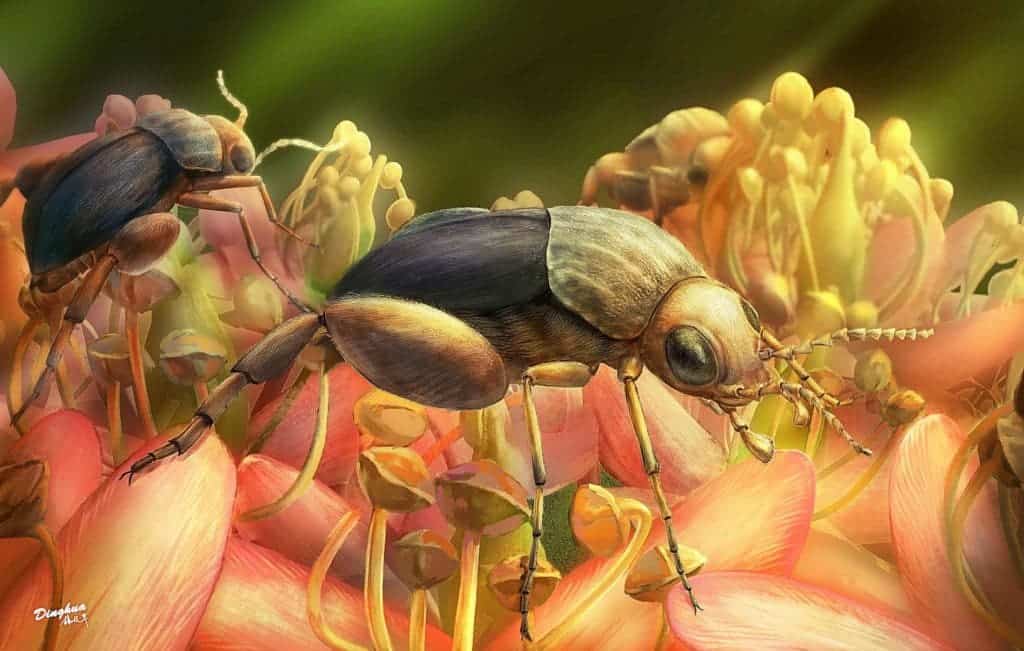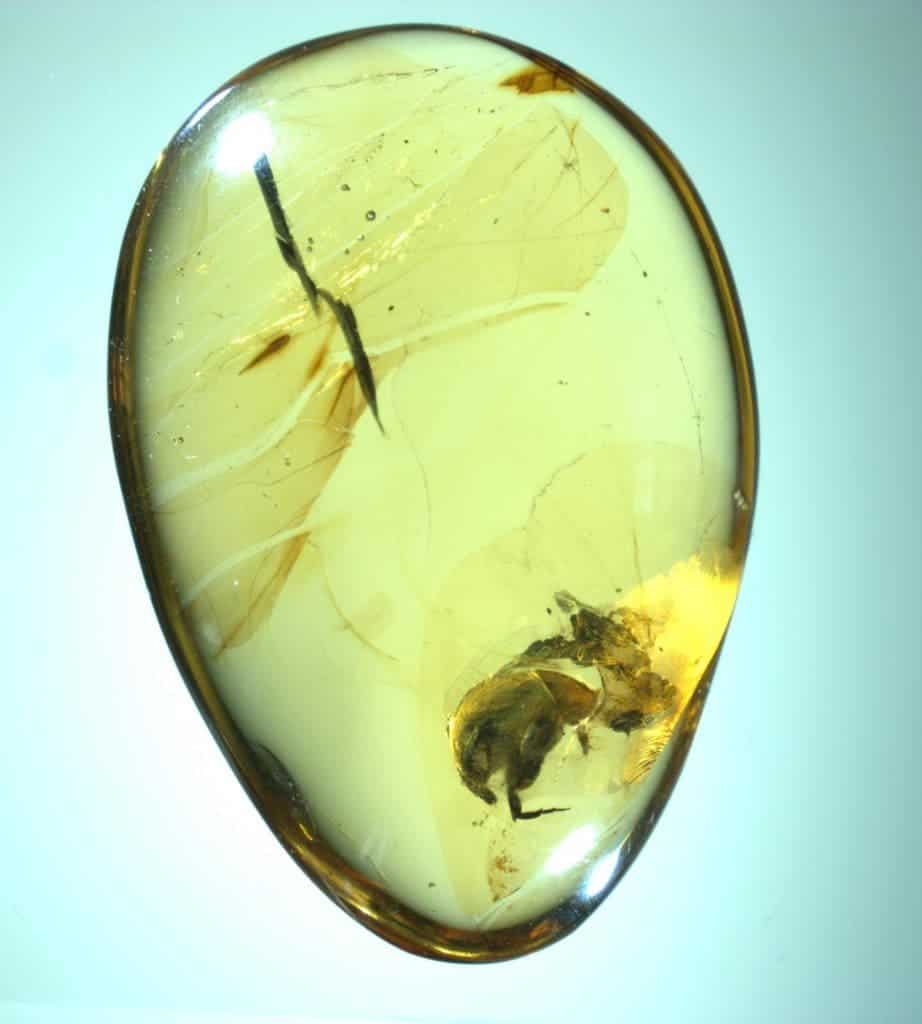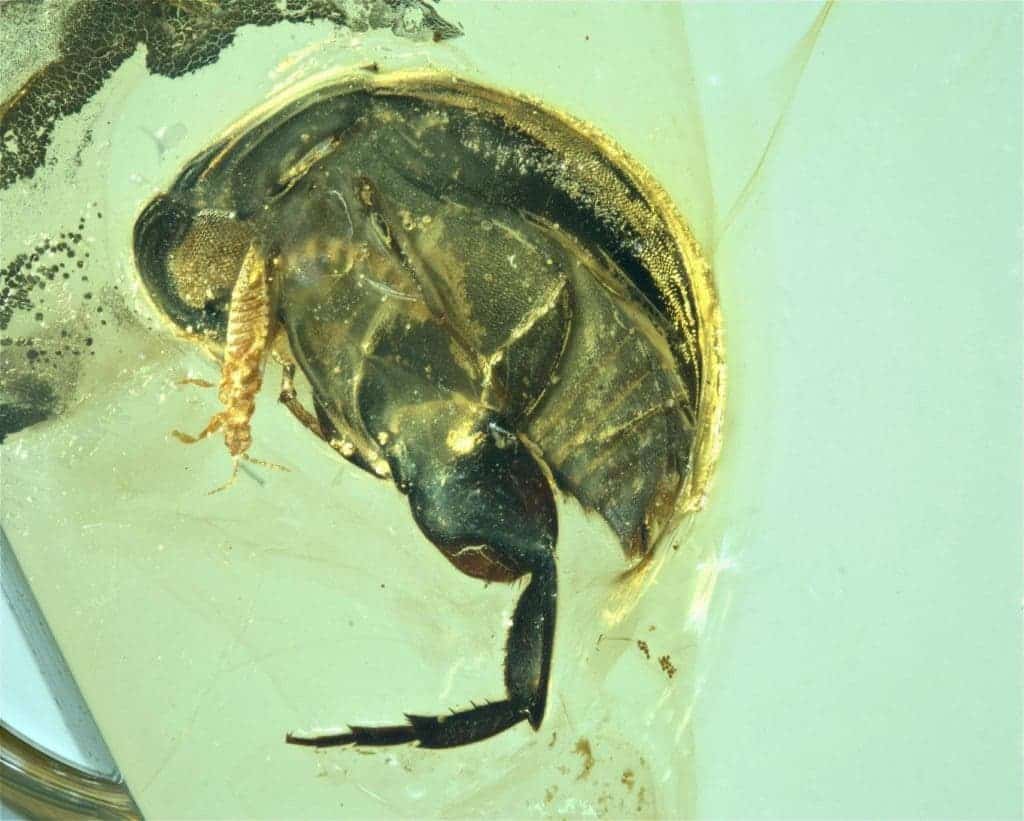Paleontologists in China and the US have documented the earliest case of insect pollination thanks to a 99-million-year-old beetle preserved in amber. The pristine fossil contains traces of pollen showing that the evolution of plants and animals during this time period were closely intertwined.

David Dilcher, an emeritus professor at the Department of Earth and Atmospheric Science at the Indiana University, performed a morphological review of the 62 grains of pollen found in the amber, which came from a mine in northern Myanmar. Dilcher is one of the world’s foremost experts in amber fossilization, who also has a lot of experience studying the earliest flowering plants.
The pollen was not easy to find. To the untrained eye, the tiny granules don’t look like anything important. However, the researchers analyzed the beetle’s body hairs under a confocal laser microscope, which made the pollen grains glow, contrasting strongly with the darkness of the insect’s shell.

The shape and structure of the pollen — particularly the pollen’s size, “ornamentation” and clumping ability — show that it evolved to spread through contact with insects. The analysis showed that the pollen came from a flower species in the group eudicots, which is one of the most common types of flowering plant species.
As for the beetle trapped in the amber, it belongs to a new species that the researchers named Angimordella burmitina. Using X-ray microcomputed tomography (micro-CT), Dilcher and colleagues could study the insect’s shape and physical features in minute detail without having to disturb or damage the fossil in any way whatsoever. Armed with a 3-D digital model of the beetle, the researchers could clearly see several specialized body parts signaling the insect’s role as a pollinator, including the shape of the body itself and pollen-feeding mouthparts.

Researchers determined the age of the amber fossil from the age of other known fossils retrieved from the same location. At nearly 100 million years old — during a time when pterodactyls were still alive, roaming the sky — the discovery pushes back the earliest documented instance of insect pollination to about 50 million years earlier.
“It’s exceedingly rare to find a specimen where both the insect and the pollen are preserved in a single fossil,” said Dilcher. “Aside from the significance as earliest known direct evidence of insect pollination of flowering plants, this specimen perfectly illustrates the cooperative evolution of plants and animals during this time period, during which a true exposition of flowering plants occurred.”
The findings appeared in the journal Proceedings of the National Academy of Sciences.









